Phuong Vi communal house and pagoda (Bac Ninh city)
(BNP) – Phuong Vi communal house and pagoda (Phuong Vi area, Vu Ninh ward, Bac Ninh city) were ranked as a provincial-level historical and cultural relic in 2002.

Phuong Vi communal house.
Phuong Vi communal house was built during the Le Dynasty and burned down during the resistance war against the French. In 1994, the “Đại đình” (Great Hall) was restored. In 2008 Tien Te (Front Ceremonial Hall) was built. In 201, Guest House was built. Phuong Vi communal house worships the “Ngũ Vị Đại Vương” (Five Great Kings), who helped the Former Ly Dynasty in the great invasion of the Luong Dynasty in the 6th century.

Structure of “Đại đình” (Great Hall)
The communal house has an architecture of pre-Chinese “Nhat” letter and post-Chinese “Dinh” letter including 5-compartment Dai Dinh, 1- compartment Emperor’s harem, and a strong wooden frame.
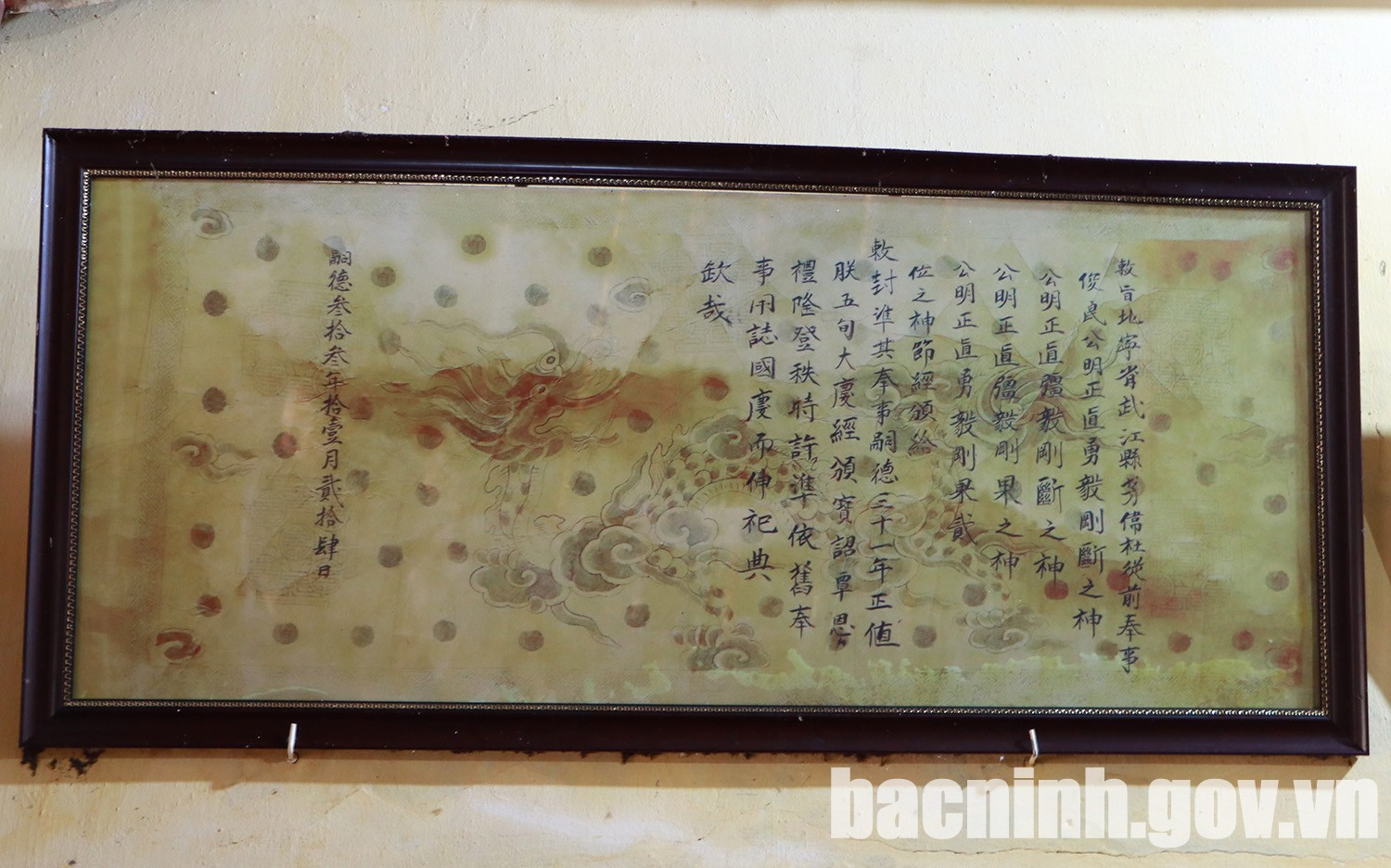
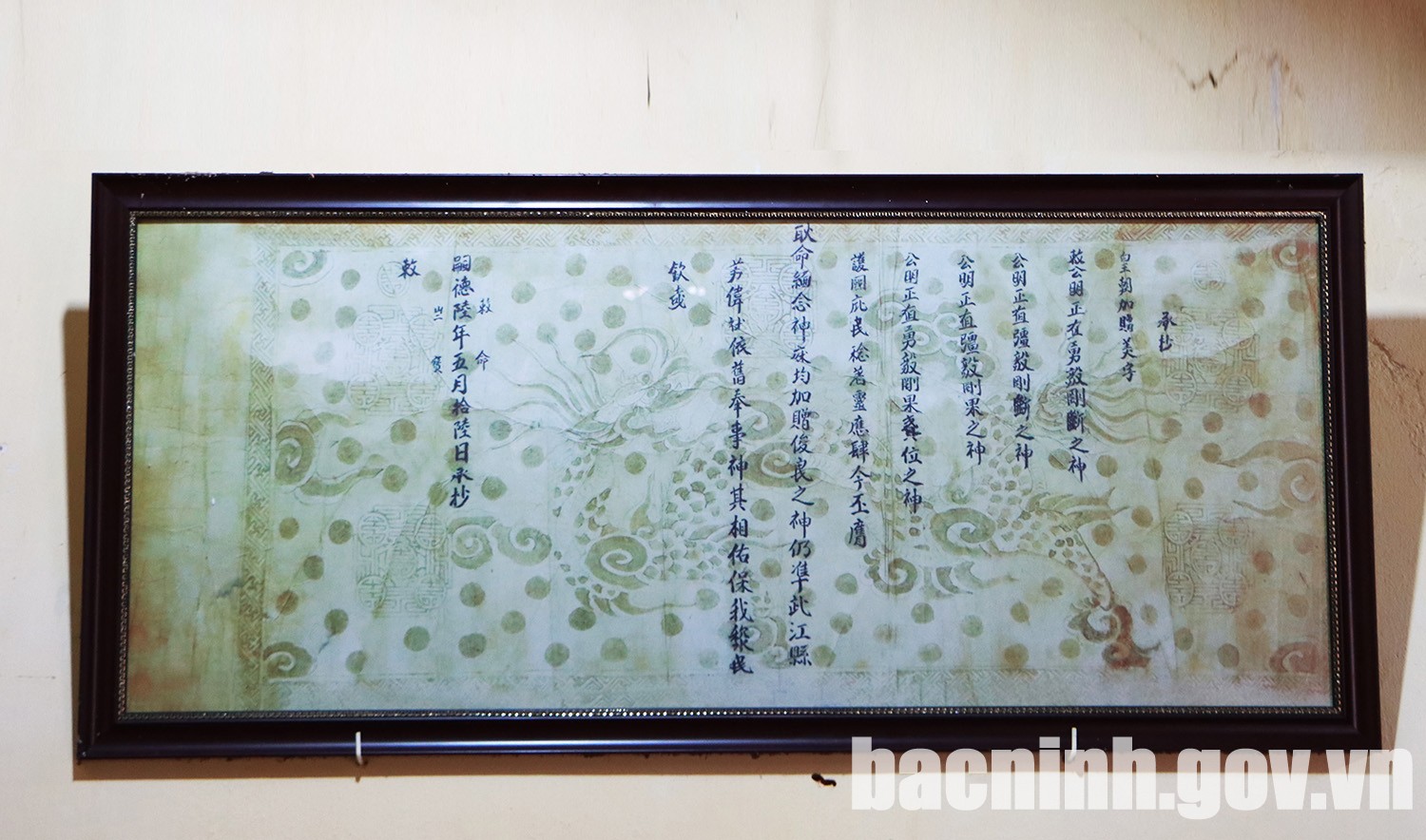
Ordinations of the Nguyen Dynasty.
Phuong Vi also preserves a number of precious antique documents, especially those in Chinese characters such as: The fairy tale (Le dynasties, 18th century), 07 ordinations of the Nguyen Dynasty, and worship objects (Le and Nguyen dynasties). )…

Decision of the Provincial People's Committee on the recognition of Phuong Vi communal house and Pagoda as a Historical - Cultural Relic.
The traditional festival of Phuong Vi communal is held on January 10th.
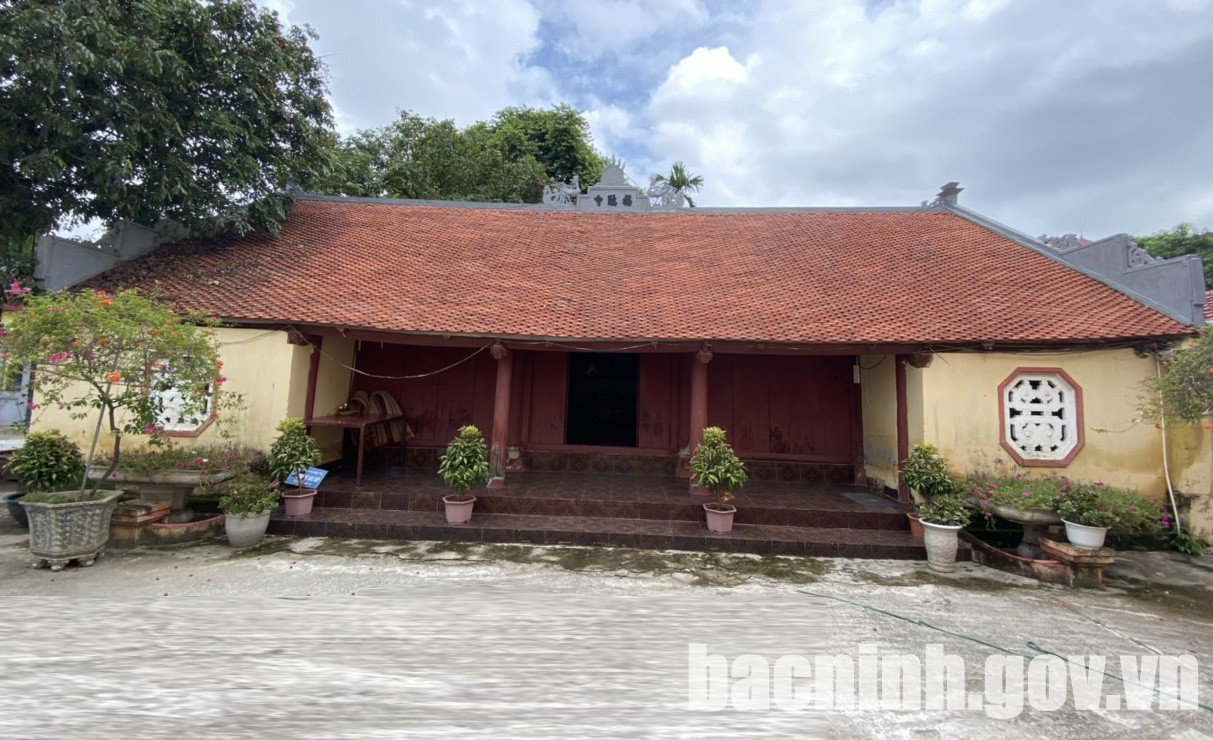
Phuong Vi Pagoda.
Phuong Vi Pagoda is located adjacent to the communal house, forming a complex of ancient and profound relics, built a long time ago and restored at the end of the Nguyen Dynasty.
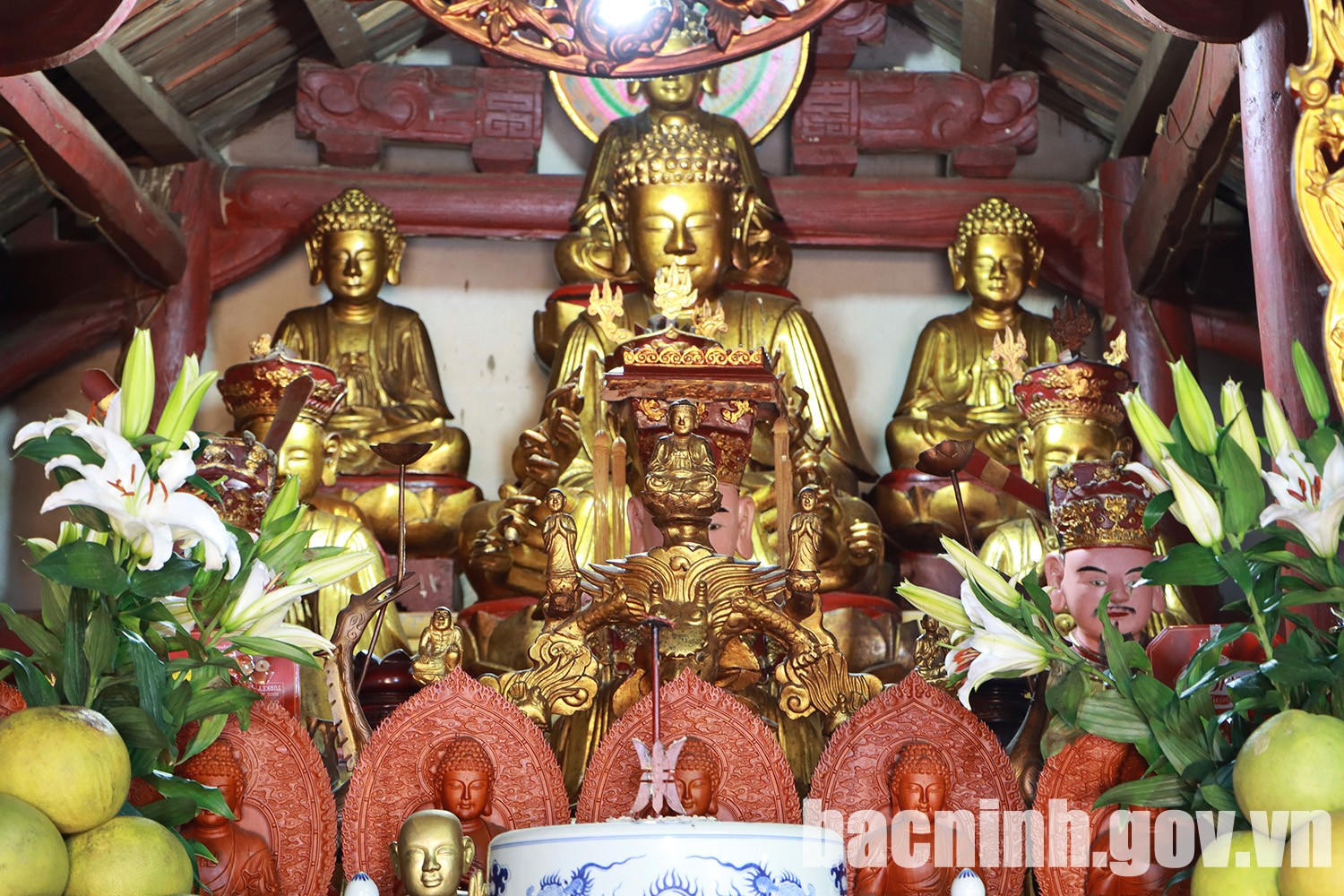
The set of statues of the Three Worlds and the Cuu Long Court (Nguyen Dynasty) are typical antiquities that are valuable in many aspects.
Phuong Vi Pagoda has a Chinese “Dinh” letter architecture, including: 5 compartments in the front, 3 compartments in the upper hall.
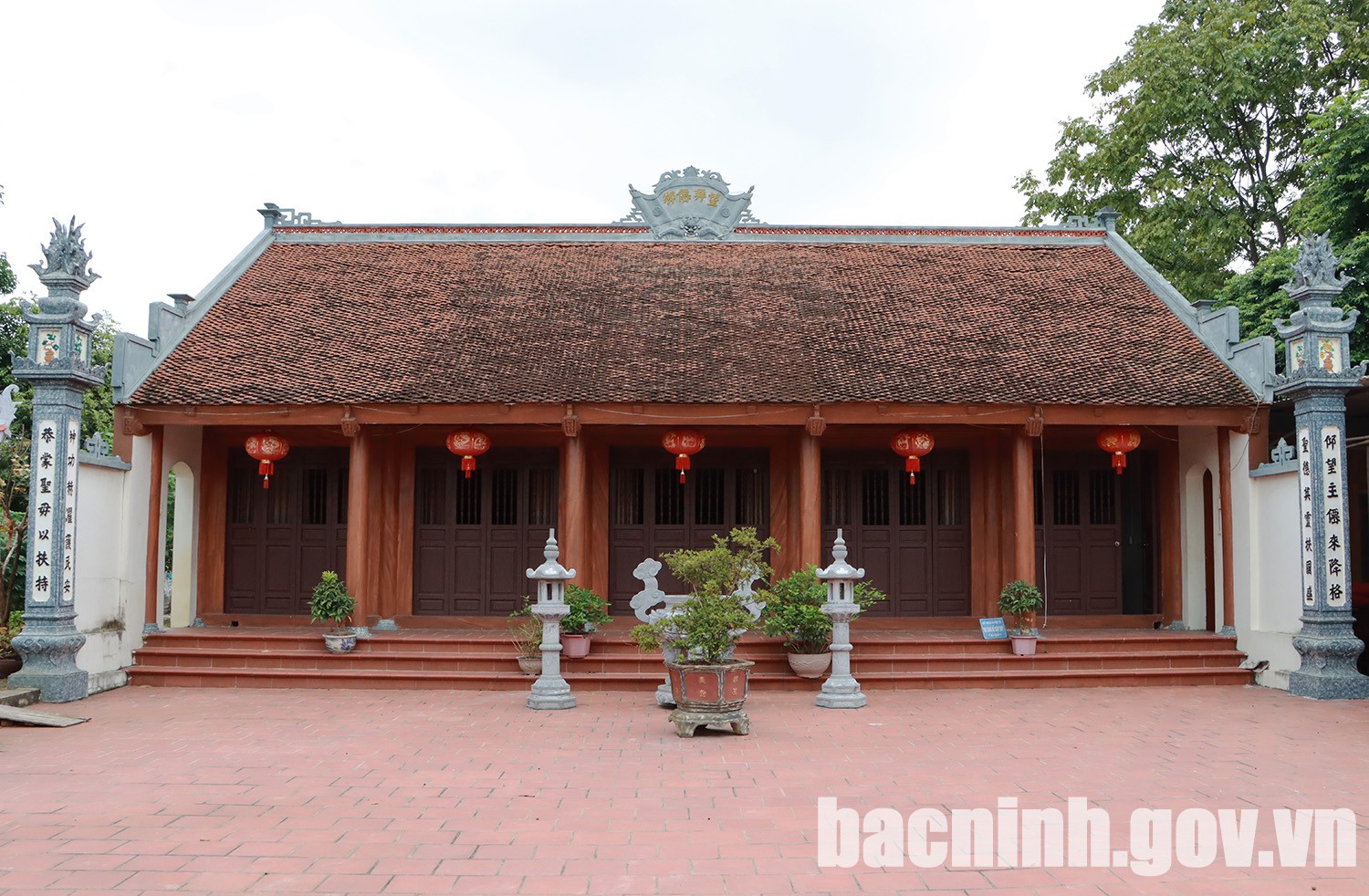
Mother house.
In addition, there are also a 5-compartment Mother house, 3-compartment ancestral house, all made of concrete and reinforced materials.

An ancestral house
Phuong Vi Pagoda is a typical work in the traditional architectural style. The system of Buddha statues and worshiping objects contains the values of sculpture and folk art. This place also preserves a system of typical antiquities and relics of value in many aspects, such as: Stone incense trees (Chuong Hoa era), bronze bells (Nguyen 1846), Buddha statues, worshiping objects...
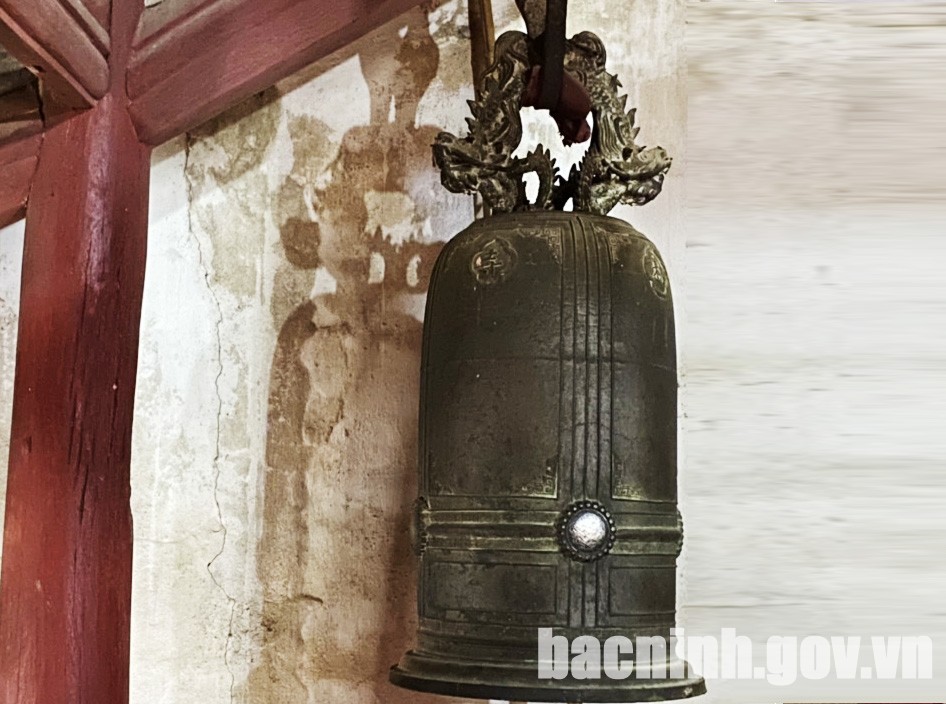
Bronze bell (Nguyen Dynasty 1846).
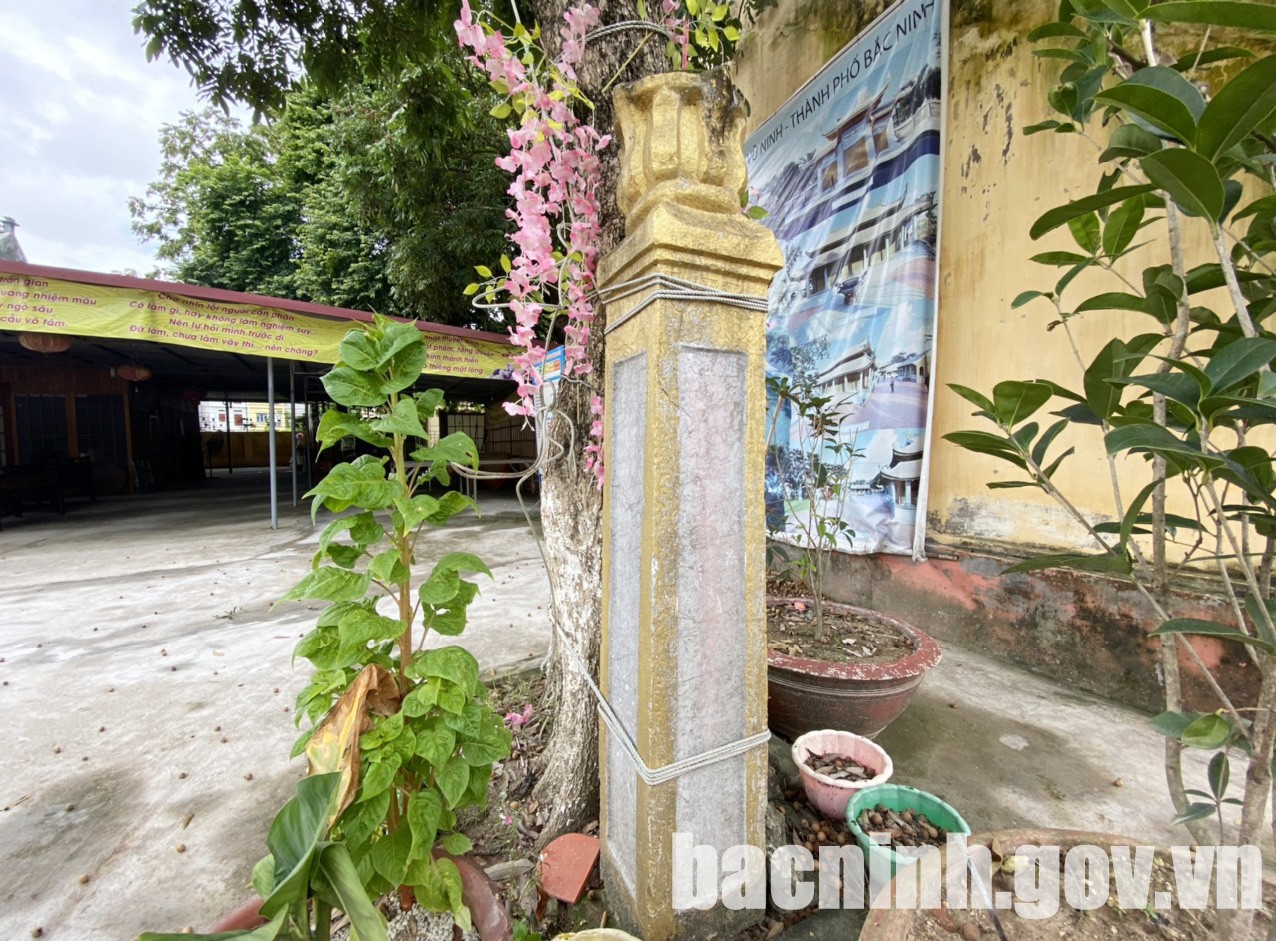
Stone incense (Chronicle of Chinh Hoa).






